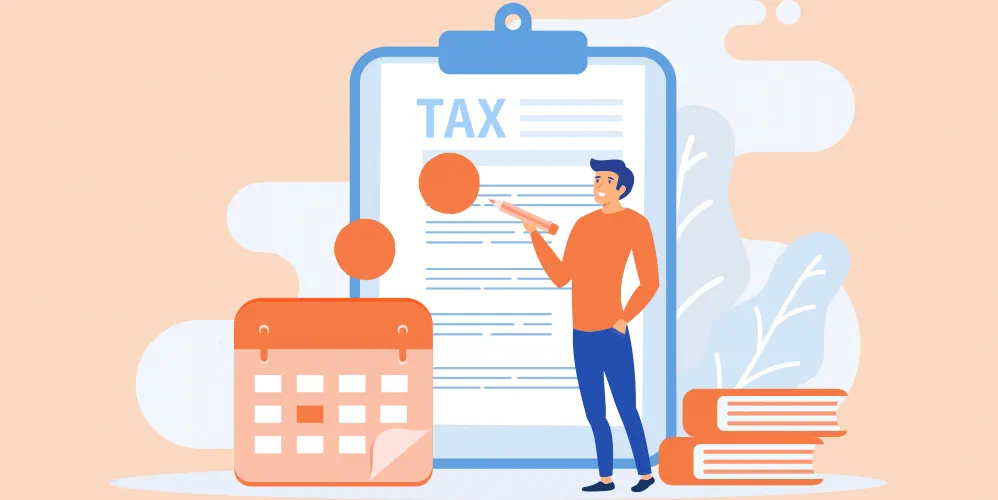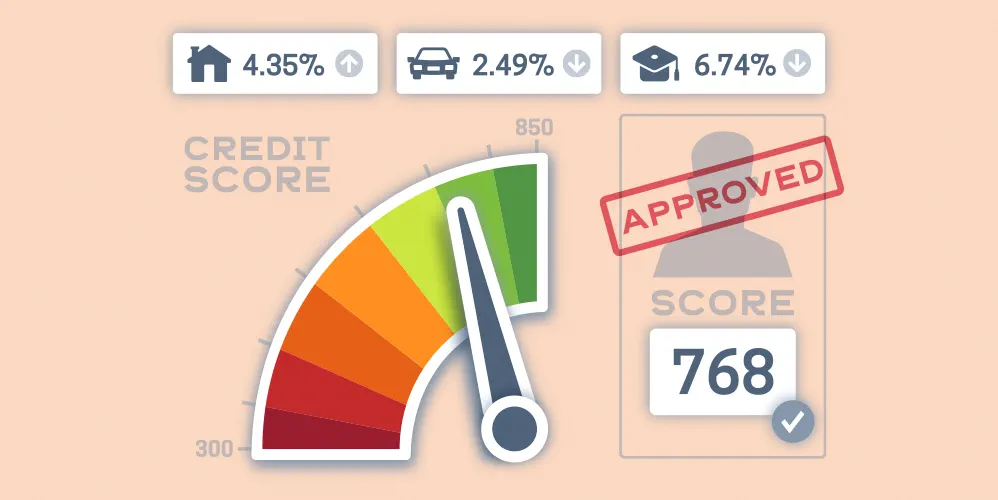
Car Loan Foreclosure & Prepayment Process
10 Feb 2023

Table of Content
What is the Need for Foreclosure & Pre-closure
While car loans are a great way of purchasing high-end new or used cars, repaying the loan is a responsibility that keeps borrowers on their toes. A good plan of repayment will help lenders systematically manage their EMI without delaying or defaulting. Once you calculate your EMI, based on the types of car loan, new or pre-used, ensure you have a well-researched repayment plan ready. No matter what the size of your loan, a properly researched repayment plan will increase the loan sanction eligibility from banks. Following the EMI repayment tenure that the bank has set, is one way to pay back a major part of the full loan through prepayment or foreclosure, closing the loan can ease a bit of the borrower’s pressure. Banks and financial institutes annually allocate large funding towards loans. Thus, repayment and foreclosure are attached to certain terms and conditions as lenders incur losses through foreclosure or part payment. The loan process rests upon an agreement where the borrower agrees to pay regular EMI to the bank or the lender, so borrowers may have to pay car loan closure charges when they choose these repayment options. Banks offer borrowers the flexibility to pay off the entire or part of the loan balance ahead of the term reducing the interest liability. In this article let us explore these repayment processes that lenders offer to borrowers.
Car Loan Foreclosure Procedure
Foreclosure is the process of returning the outstanding loan amount through lump sum payments. This lump sum can be a part payment or full payment before the due date making borrowers financially debt-free from the cycle of the periodic EMI till the term end. When the loan balance amount is paid in full through a single payment before the term, it is called a foreclosure. However, for choosing this option, the borrower needs to follow the conditions set by the bank. A foreclosure can be done after paying a certain number of EMIs. This can be paid after a month or a few months of paying the EMI. You can plan a foreclosure when applying for the loan and discuss it with the lender.
How to calculate foreclosure?
- Plan your loan amount to be repaid ahead of the application
- Decide the loan tenure
- Based on the interest rate, calculate the EMI through the online EMI calculator
- Calculate the month till which you will clear the EMI
- Choose the foreclosure month
- Calculate, car loan foreclosure charges incurred during the foreclosure
- Lenders charge a certain percentage of the outstanding amount as part of the foreclosure charges. Different retailers charge differently but the usual charges fall within 2%-5% with additional taxes. Lenders compensate a bit of their lost interest through this penalty. Thus, ensure you are calculating the penalty when planning a foreclosure
Steps to foreclosure:
You can make a car loan closure both online and in-person at the lending branch
- Submit a written application asking for a foreclosure of the loan
- Submit all necessary documents that include:
- Personal identification proof; PAN card, Aadhar card, Driving license or Passport
- Loan documents
- Loan account details
- Bank statements as proof of last EMI payment and clearance
- The bank will calculate the loan balance based on the EMI and the interest paid till that stage. The bank will communicate the foreclosure charges, taxes, and date of prepayment of the loan to the borrower.
- The borrower based on this information will clear all outstanding dues through either cheque, demand draft or online transfer of funds.
- After the pending amount is cleared, the bank will proceed with the foreclosure by instructing the closure of the EMI deduction and reminders, all original documents of the car will be handed over to the borrower within 15 business days.
What car loan documents will the borrower receive from the lender upon foreclosure:
- Acknowledgement letter
- Foreclosure payment receipt
- No due certificate
- NOC No Objection Certificate to close the car loan
- Loan closure certificate
- Vehicle registration certificate, insurance documents, tax documents and Emission Certificate
- All cancelled post-dated cheques (you need to do this in person)
- Ensure you have Form 35 cancelling hypothecation stating termination of the loan agreement.
- NOC to the Regional Transport Office (RTO) and insurance company, valid for 90 days from the date of issuance. Visit the RTO within 90 days where your vehicle is registered with the original (make one copy), Bank NOC, RC book (Registration Certificate) and Form 35 signed by the bank and you (2 copies), car insurance document, Pollution Under Control Certificate (PUC) and personal ID with address proof
- Ensure registered hypothecation is cancelled in the RC book. You will receive a temporary receipt to be used as a temporary RC until the issuing of the updated book
- Submit a photocopy of the updated RC book, at the insurance office to formally cancel hypothecation through a formal letter stating thus
Car Loan Pre-payment Procedure
By prepaying car loans, you are paying part of the loan in advance of its maturity date. Before applying for a car loan, you must have a financial plan. From the Car Loan EMI Calculator, calculate the amount best suited for you. Do you wish to make the repayment till the full term, or if there is cash coming from one of your investments, do you want to make a pre-payment? A prepayment will shorten the car loan tenure as the remaining outstanding principal is reduced, and the interest liability is adjusted accordingly through EMIs for the remaining term. Car loan pre-payment charges differ between financial retailers, therefore, before choosing a retailer, go through their pre-payment terms and conditions if you are planning pre-payment. Lenders charge car loan pre-payment penalty as the lender loses the anticipated interest compensating the amount through a penalty. Pre-payment can be made in parts and a pre-closure or foreclosure suggests that the amount is fully paid, and EMI is closed. A borrower can make many pre-payments to close the loan by paying part of the loan before the term ends, thus reducing the principal outstanding. Some banks do not allow pre-payments in parts.
Steps for pre-payment
- Read the bank's terms and conditions before making a pre-payment. Some banks allow pre-payment only after a year from the date of loan procurement.
- Pre-payment is done in the same way as a foreclosure. You can contact the bank directly.
- Fill out the car loan pre-payment form and deposit the penalty fee (if any) charged by the bank. You can do this through ECS, cheques, drafts or NEFT. Pre-payment must be done at the initial stages of loan repayment.
- Start prepaying in small amounts and increase the amount gradually. Increase the pre-payment amount every year. Set aside funds in recurring deposits for a year and use that to make a yearly pre-payment.
- If you cannot increase the amount, pay a specific sum in addition to the EMI instalments. Loan repayment demands continuous planning and repurposing of your budget. By setting aside funds from your predetermined budget, you can make higher pre-payments reducing the principal.
- With pre-payments, you can try affording higher EMI and dealing better with your repayment by bringing down the principal. You can control your debt better by pushing your repayment capacity.
- If one of your investments has matured, or there has been a sudden improvement in your financial situation, and if the amount is enough for car loan prepayment, use it to end your loan before the term. Calculate the penalty attached to prepayment. Even if you pay the penalty, you are at an advantage and the EMI funds can be directed towards some other loan or investment.
Car Loan Foreclosure Charges
Most banks do not levy foreclosure charges within 6-months from the date of availing the loan. If the pre-closure is within 1 year, from the 7th EMI, a 6% penalty on the principal outstanding is imposed. If within 13-24 months, a 5% penalty in the principal outstanding is levied from the 1st EMI. If pre-closure is posted between 13-24 months, a 3% penalty will be charged from the 1st EMI. Bank of Baroda allows foreclosure after the first EMI is paid. The bank does not levy any extra penalty on foreclosure.
Car Loan Prepayment Charges
Most banks allow prepayment after 12 EMIs are paid to the lender. Prepayment can be paid twice at any time, once a year. The payment must not increase by 25% of the principal outstanding. If prepayment is within 13-24 months from the 1st EMI, 5%-penalty is charged. If post 24 months from 1st EMI, a 3% penalty is levied. Bank of Baroda allows pre-payment after the first EMI is paid. The bank does not levy any extra car loan pre-payment charges.
Important Points to Consider Before Pre-Closing your Car Loan
Before considering a pre-closure of the bank loan, you should take these points into account for making an informed decision.
- Foreclosure has long-run benefits offering respite on high-interest car loans.
- Foreclosure reduces the interest liability on the car loan.
- Foreclosure has an impact on your CIBIL score for car loan. Returning timely EMIs strengthen credit score. A sudden foreclosure can hurt the score; however, it assures the lender of your strong repayment history.
- Once you pre-close the loan, your car loan tenure no longer exists, and you can go debt free.
- However, the bank’s penalty on foreclosure needs to be checked. If the foreclosure charges are quite high, it nullifies the foreclosure initiative. Ensure to calculate the penalty and then decide on a foreclosure or look for lenders who do not charge on foreclosures.
- Once the foreclosure is done, use the EMI funds scheduled for loan repayment in another loan. You can invest in various banking investment opportunities or apply for another attractive loan with better chances of eligibility.
- Only jump into car loan foreclosure if you have surplus funds. Do not strain your budget and other responsibilities for a foreclosure, you can make car loan pre-payments instead.
- If you are changing your loan vendor, don't forget to add the transfer charges with the foreclosure penalty.
- Before applying for a loan, use the EMI calculator to plan your repayment strategy
FAQs: Car Loan Foreclosure & Prepayment Process
How to Get Original Car Loan Documents?
- Once the car loan is paid in its normal course, through equated monthly instalment (EMI) or foreclosure,
- Get the final payment receipt from the bank showing the total amount paid and the last date of closure of the bank loan.
- A No Due Certificate (NDC) or No Objection Certificate (NOC) is received within 2-3weeks, along with documents submitted at the time of the loan.
- Ensure you have Form 35 cancelling hypothecation stating termination of the loan agreement.
- Submit an NOC given by the bank to the Regional Transport Office (RTO) and insurance company, valid for 90 days from the date of issuance. Submit original copies of the following to the RTO
- Bank NOC
- RC book (Registration Certificate)
- Form 35 signed by the bank and you (2 copies)
- Car insurance document,
- Pollution Under Control Certificate (PUC)
- Personal ID with address proof (Photocopies)
- Ensure registered hypothecation is cancelled in the RC book.
- You will receive a temporary receipt to be used as temporary RC until the issuing of the updated book.
- Submit a photocopy of the updated RC book, at the insurance office to formally cancel hypothecation through a formal letter
Is it good to foreclose a car loan?
Pre-closure helps you save on significant EMI that you were going to pay overtime. However, pre-closure needs the lender's approval, and, in some cases, lender charges a pre-closure/foreclosure penalty compensating for the lost interest. Pre-closure affects the CIBIL score for car loan. However, the Bank of Baroda has made pre-closure free after the first EMI is paid.
How do I close a car loan?
A car loan is closed when the borrower completes paying the instalments before or till the tenure. Borrowers can pre-close a loan by paying the loan amount before the end of the term. Some lenders charge a penalty on pre-closure in exchange for the lost interest. The penalty is based on the outstanding loan amount. Before opting for a closure ensure you calculate the penalty on foreclosure.
How can I get rid of my car loan without penalty?
“If you want to make a foreclosure without penalty opt for a car loan from the Bank of Baroda. Bank of Baroda is not taking any penalty for foreclosure or part payment.” The bank offers up to 90% loans on new cars and up to 75% loans on used cars. With attractive interest rates, you can opt for higher car loan amounts. The bank keeps its documentation minimal, loan processing is speedily done, and fund disposal settlements are fast in this bank. For car, loans make The Bank of Baroda your first choice. With no car loan foreclosure charges, you can apply for another loan from the bank immediately.
Popular Articles
-
Disclaimer
The contents of this article/infographic/picture/video are meant solely for information purposes and do not necessarily reflect the views of Bank of Baroda. The contents are generic in nature and for informational purposes only. It is not a substitute for specific advice in your own circumstances. Bank of Baroda and/ or its Affiliates and its subsidiaries make no representation as to the accuracy; completeness or reliability of any information contained herein or otherwise provided and hereby disclaim any liability with regard to the same. The information is subject to updation, completion, revision, verification and amendment and the same may change materially. The information is not intended for distribution or use by any person in any jurisdiction where such distribution or use would be contrary to law or regulation or would subject Bank of Baroda or its affiliates to any licensing or registration requirements. Bank of Baroda shall not be responsible for any direct/indirect loss or liability incurred by the reader for taking any financial decisions based on the contents and information mentioned. Please consult your financial advisor before making any financial decision.











